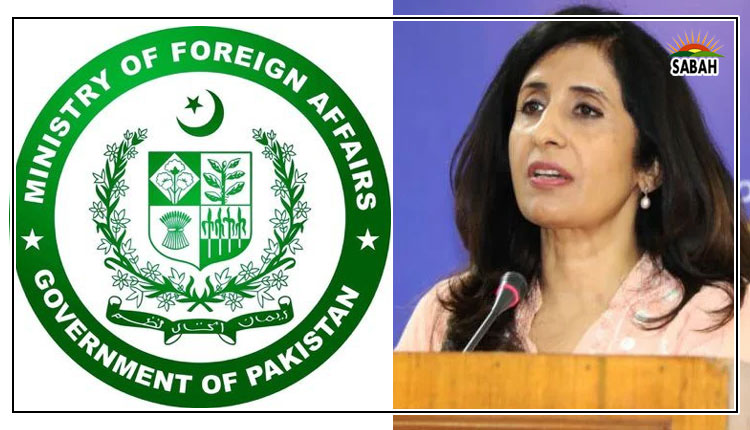Fly on Great Wall …. Shahzad Sharjeel
AS our great neighbour becomes greater by the day, we are moving from being ‘another brick in the wall’ to nothing more than a fly on the wall — the Great Wall, that is. Geographical proximity and the mostly congenial nature of ties notwithstanding, do we really know China?
Folklore in the Gilgit-Baltistan region would have you believe that before the ancient mountain passes fell into disuse, one could run with a hot chapati and arrive on the Chinese side with the bread still warm. Exaggeration, perhaps, but the road distance between Islamabad and Tash-
kurgan, the Chinese border town, via the Khunjerab Pass is half the distance between the federal capital and Karachi. Besides the fabled Silk Road, the Great Wall, the Xinjiang region, and the names of a few cosmopolitan centres like Beijing and Shanghai, most of us would be hard-pressed to name a couple more cities or regions.
All of it can’t be blamed on the lack of curiosity on the part of China’s neighbours, particularly in the subcontinent. The ebb and flow of our interest in knowing China has also been regulated by policy decisions in great Chinese capitals over the millennia. How two of the greatest civilisations on earth can live cheek by jowl and yet be barely acquainted has been discussed in detail by Shyam Saran, former diplomat and author, in his wonderfully narrated book How China Sees India And The World.
Two of the greatest civilisations barely know one another.
How the subcontinent and China have managed to remain indifferent towards each other for most of recorded history is marked by epochs of respectful distance and eons of self-importance bordering on disdain on the latter’s part. In the first millennium, people of the Middle Kingdom regarded India with some awe as an emblem of Eastern sophistication and spirituality. In the second millennium, everything beyond the core of the Mandate of Heaven began to be considered ‘barbaric’. Trade caravans through the storied Silk Road — in reality, a microcosm of routes and maritime exchanges through the ports in southern India — preceded the even more talked-about Indian export, the teachings of Lord Buddha. Monks from both sides crisscrossing the mountain passes, Central Asian steppes, sea routes, and the Tibetan plateau never outnumbered the merchants of silk, porcelain, jade, and spices. Tibet and the fight over it between the two neighbours came much later.
It’s unimaginable today that Tibet, a Shangri-La wrapped in a mythical mist between 8th and 9th CE, extended its control to present-day Yunnan, Sichuan, Inner Mongolia, and the Mongolian People’s Republic. Images of Tibet for us swing between the sublimity of Buddhist monasteries, to things as pedestrian as a plaza famous for auto parts in Karachi, and a moisturiser-cum skin-lightening agent named after snow from the roof of the world.
The difficult-to-translate Arab tradition of al-wala, wal-bara (embrace the beneficial and disavow the harmful) can be seen at work during Mao’s speech to the politburo in 1962, before the Indo-Chinese border war. While describing the ‘one-and-a-half’ prior wars between them, he declared a skirmish between a Tang dynasty diplomatic mission to India in 647 CE and a local adventurer who tried to usurp King Harsha’s throne in Kanauj a full war, whereas Timur’s attack in 1398 merited only the status of a ‘half war’, owing to his Mongolian identity.
How interesting that a Muslim invasion against their coreligionists’ rule in India, and the indiscriminate horror unleashed by the conquering hordes, is owned by another country, albeit half-heartedly because of Timur’s Mongol identity. Everyone outside of the Middle Kingdom, the centre of the Chinese civilisation between the Yellow and Yangtze rivers, qualified, at best, as ‘half-Chinese.’ This sort of accounting can also be described as ‘too clever by half’ or ‘dedh-hoshyari’, its Urdu equivalent.
The two-way influences of the Chinese and Indus-Gandhara civilisations are too numerous to list here. A few disparate examples are ‘Tanchoi’, commonly known as the ‘Banarasi’ sari, which derives its name from three Gujarati artisans who travelled to Shanghai in 1856 as apprentices to one Mr Chhoi, a famous silk weaver. ‘Tan’ means three in Gujarati dialects, and when the weavers returned to Surat, Tanchoi was born. As demand for the fabric decreased, the artisans and their craft shifted to Banaras, and the name has stuck since. ‘Zen’, meaning meditation, evolved from the Sanskrit word ‘dhyana’. ‘Bokhara’, is a variation of ‘vihara’, meaning monastery. Central Asia was a bastion of Buddhism before the Muslim influence. Archaeologists like Aurel Stein called the entire Central Asian zone ‘Serindia’. The affinities and irritants between Pakistan and China have been left out for another piece.
The writer is a poet. His latest publication is a collection of satire essays titled Rindana.
shahzadsharjeel1@gmail.com
Courtesy Dawn, May 8th, 2024












